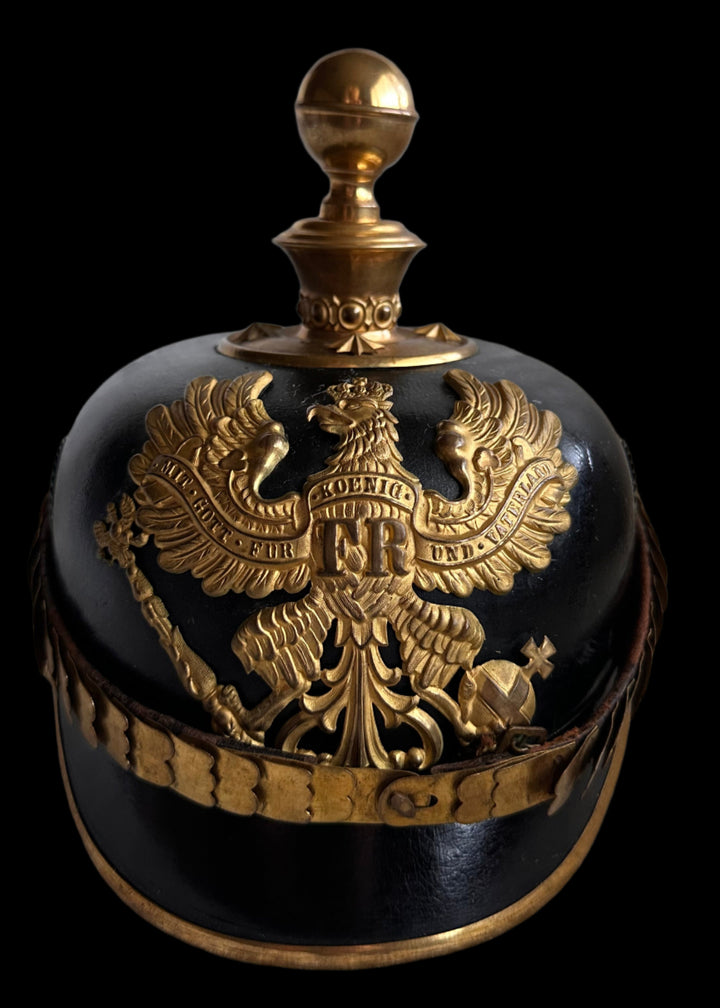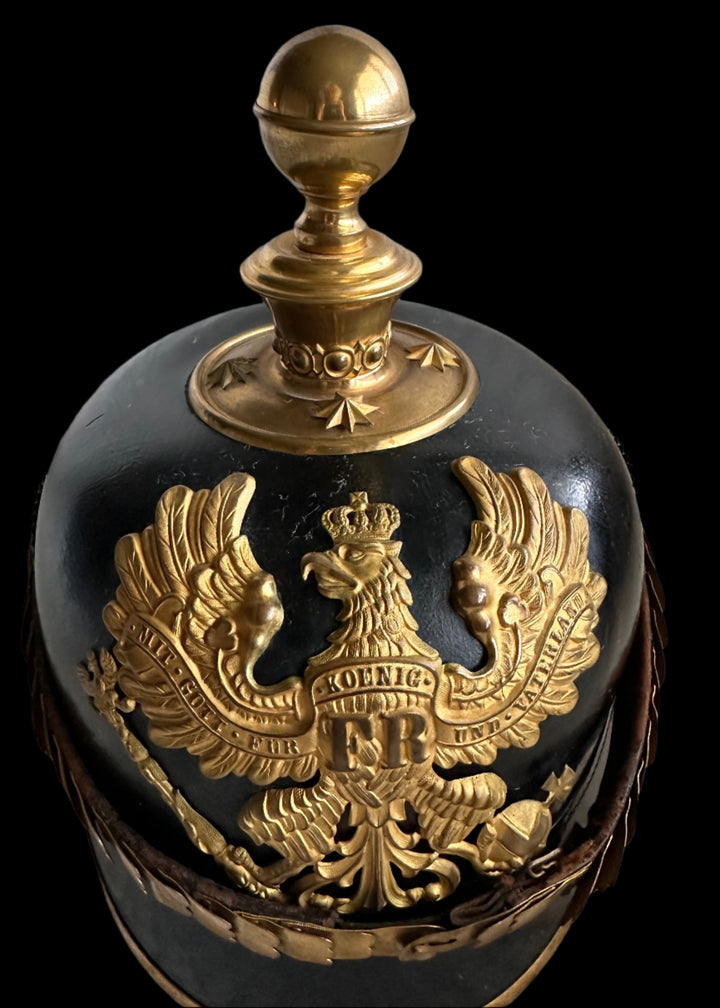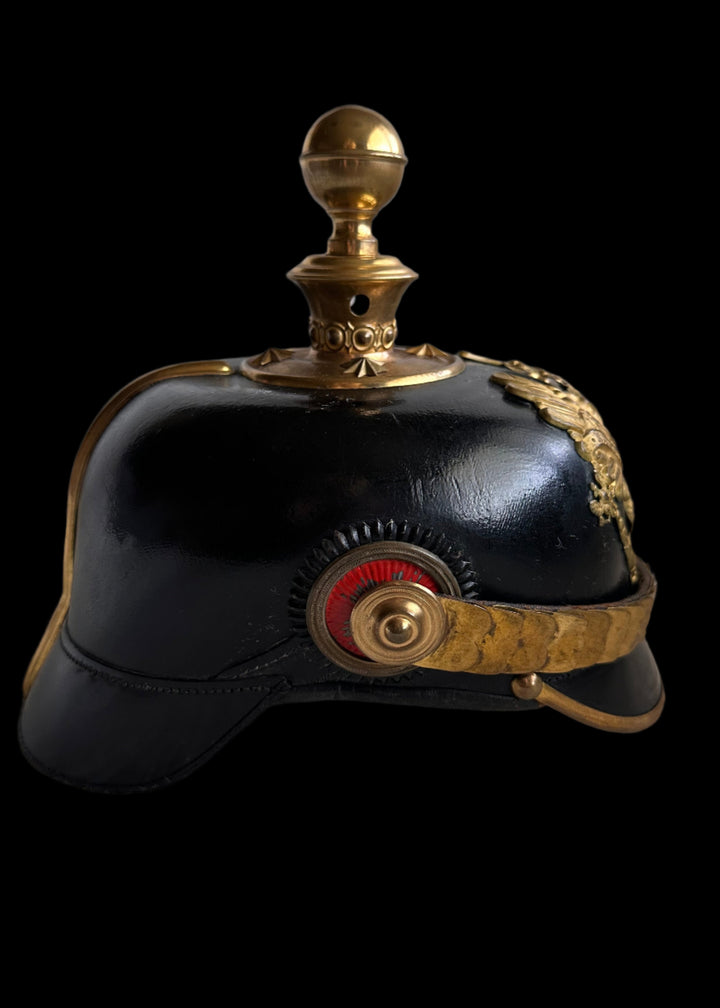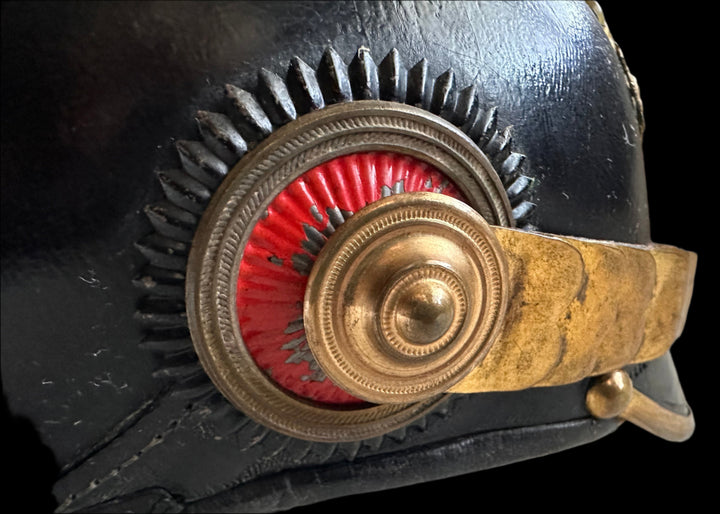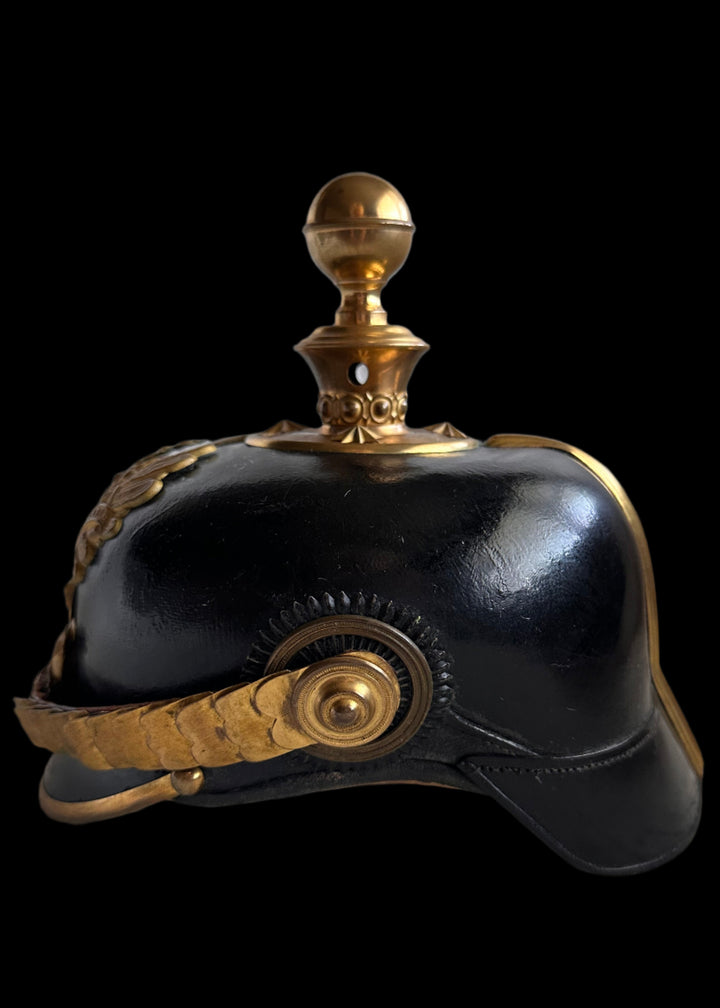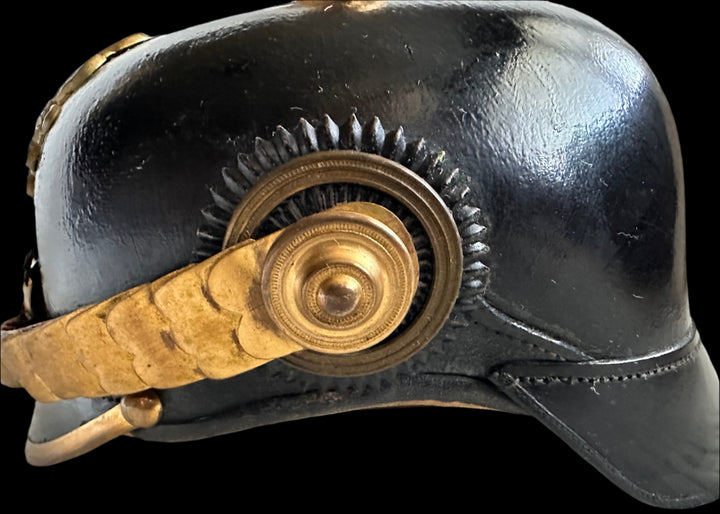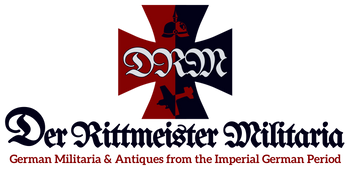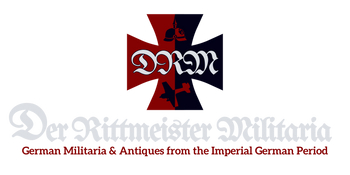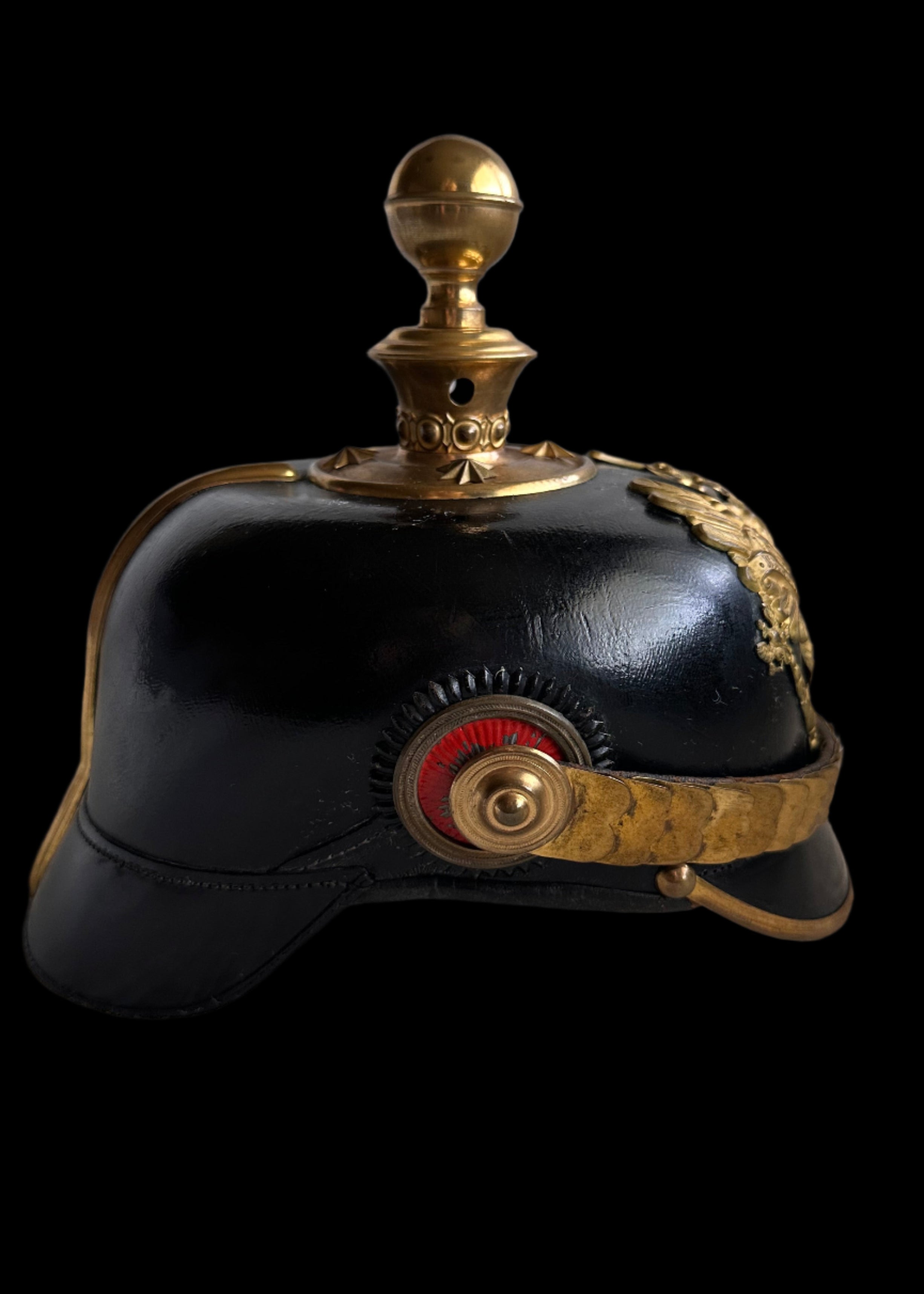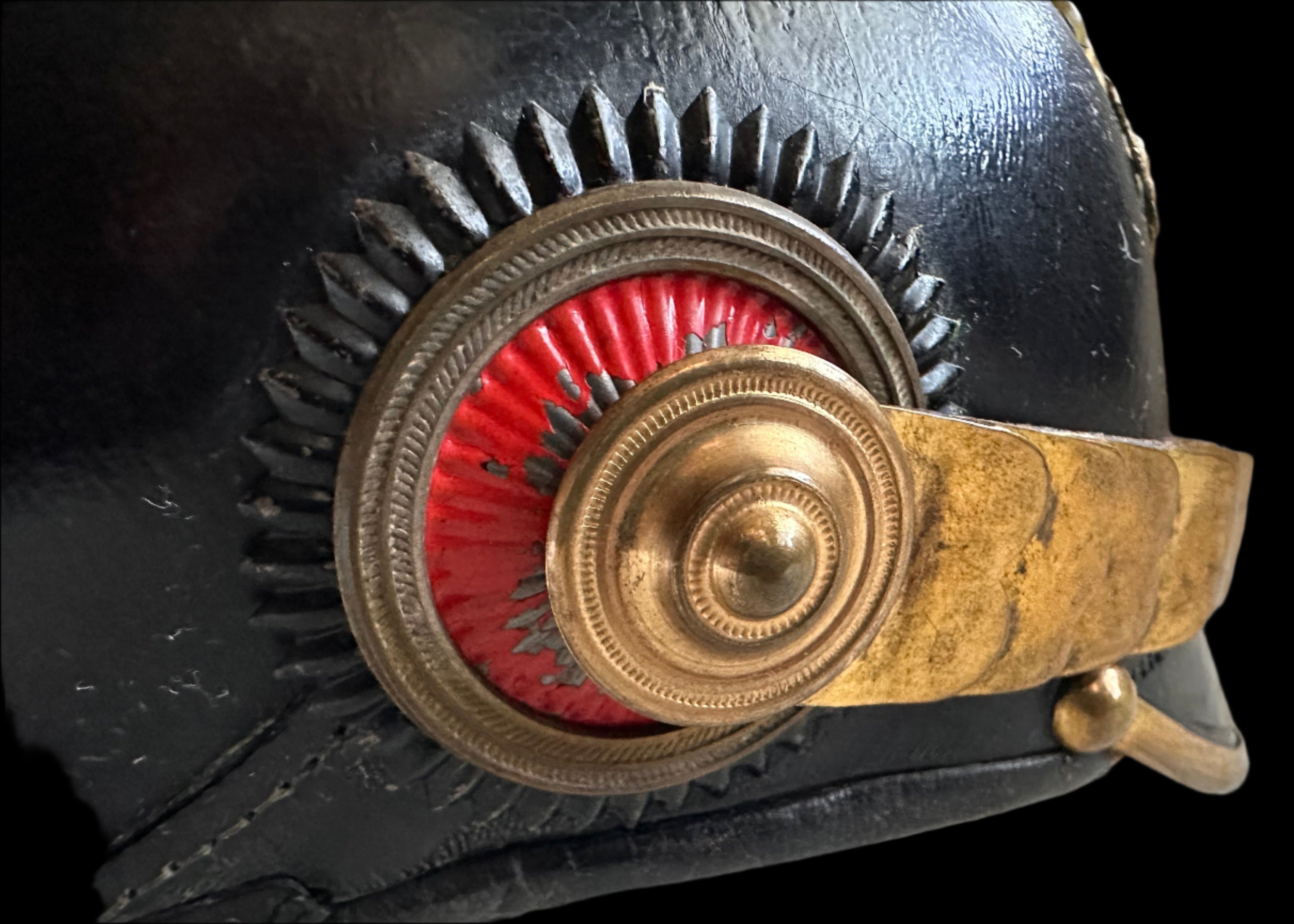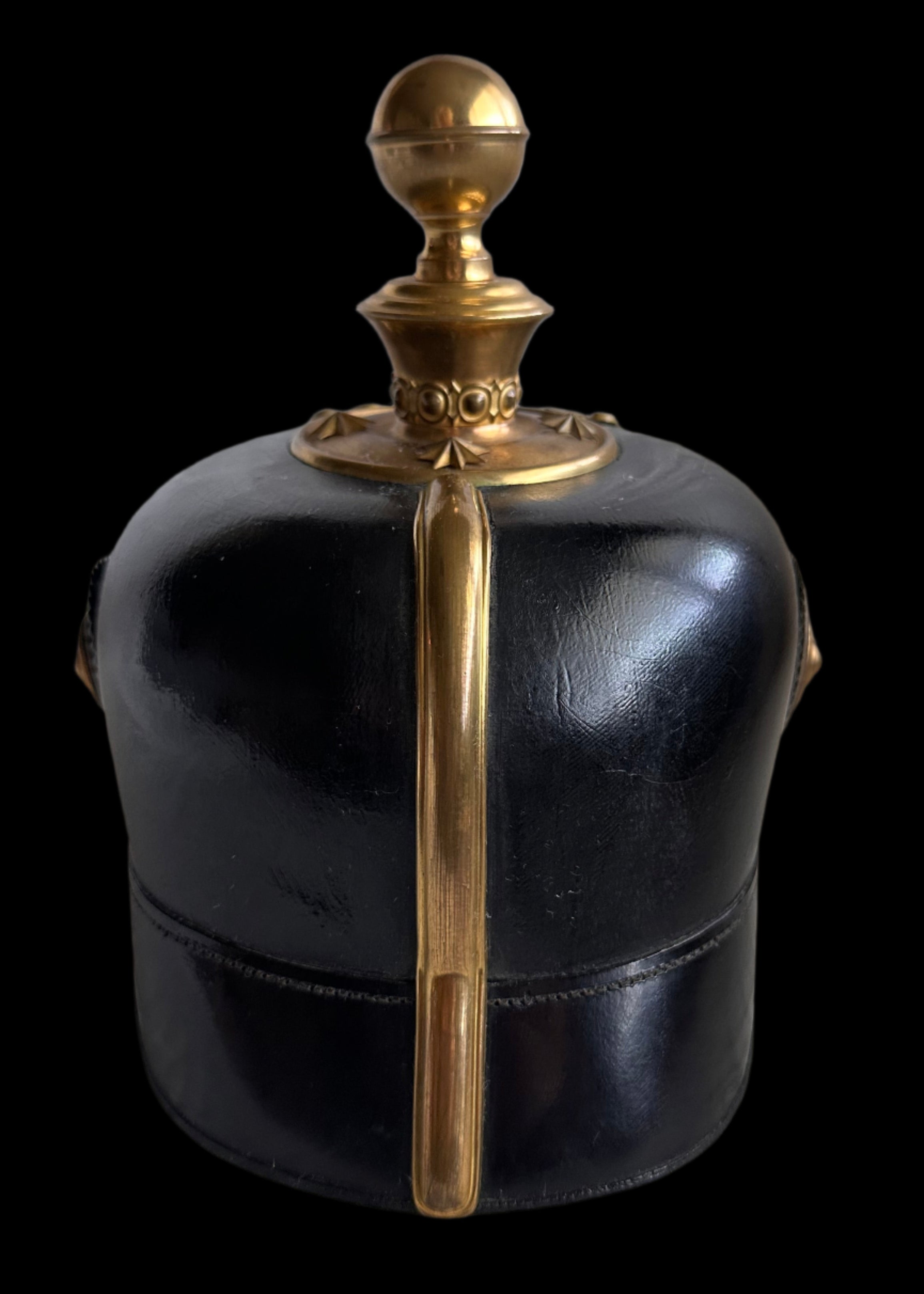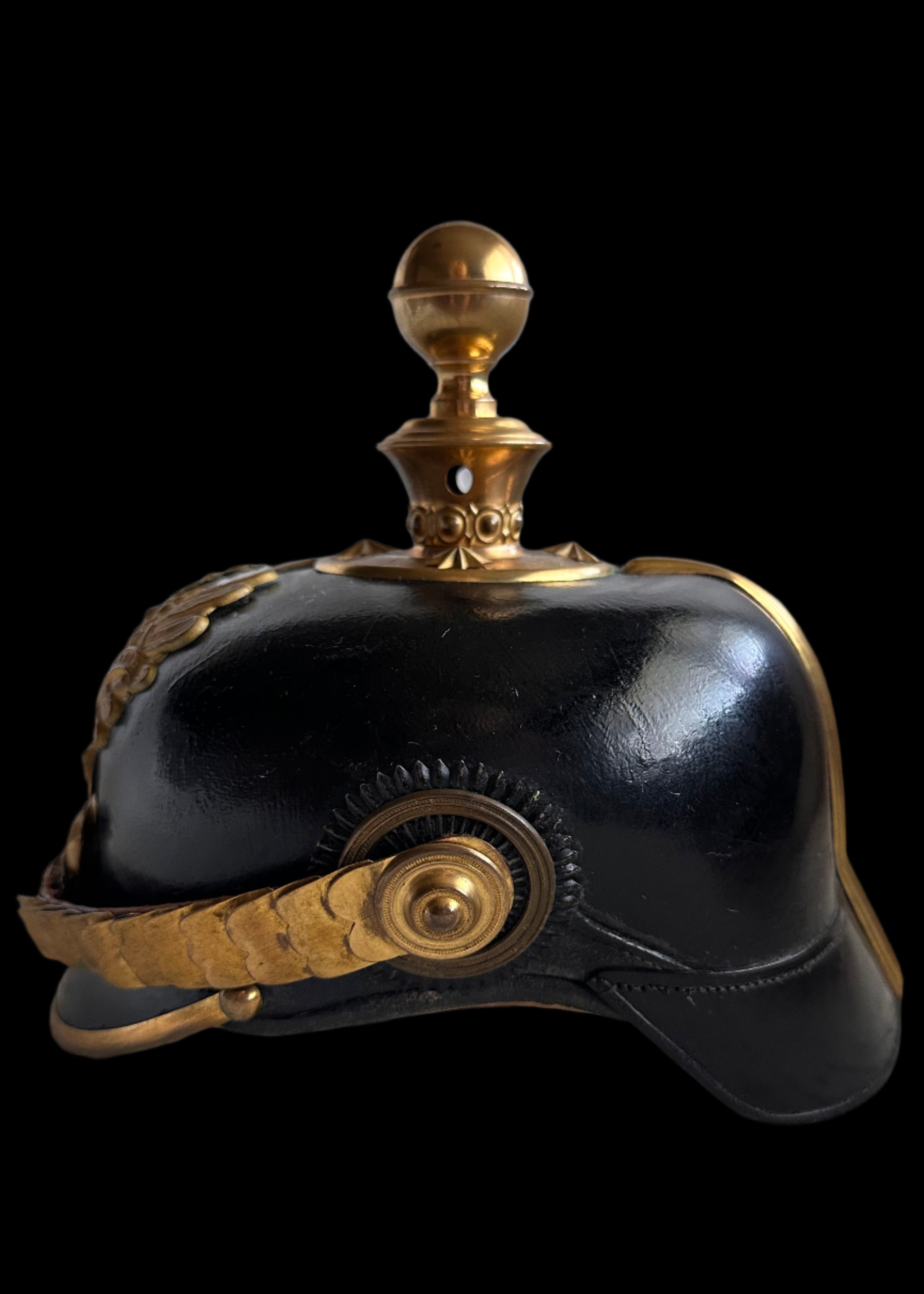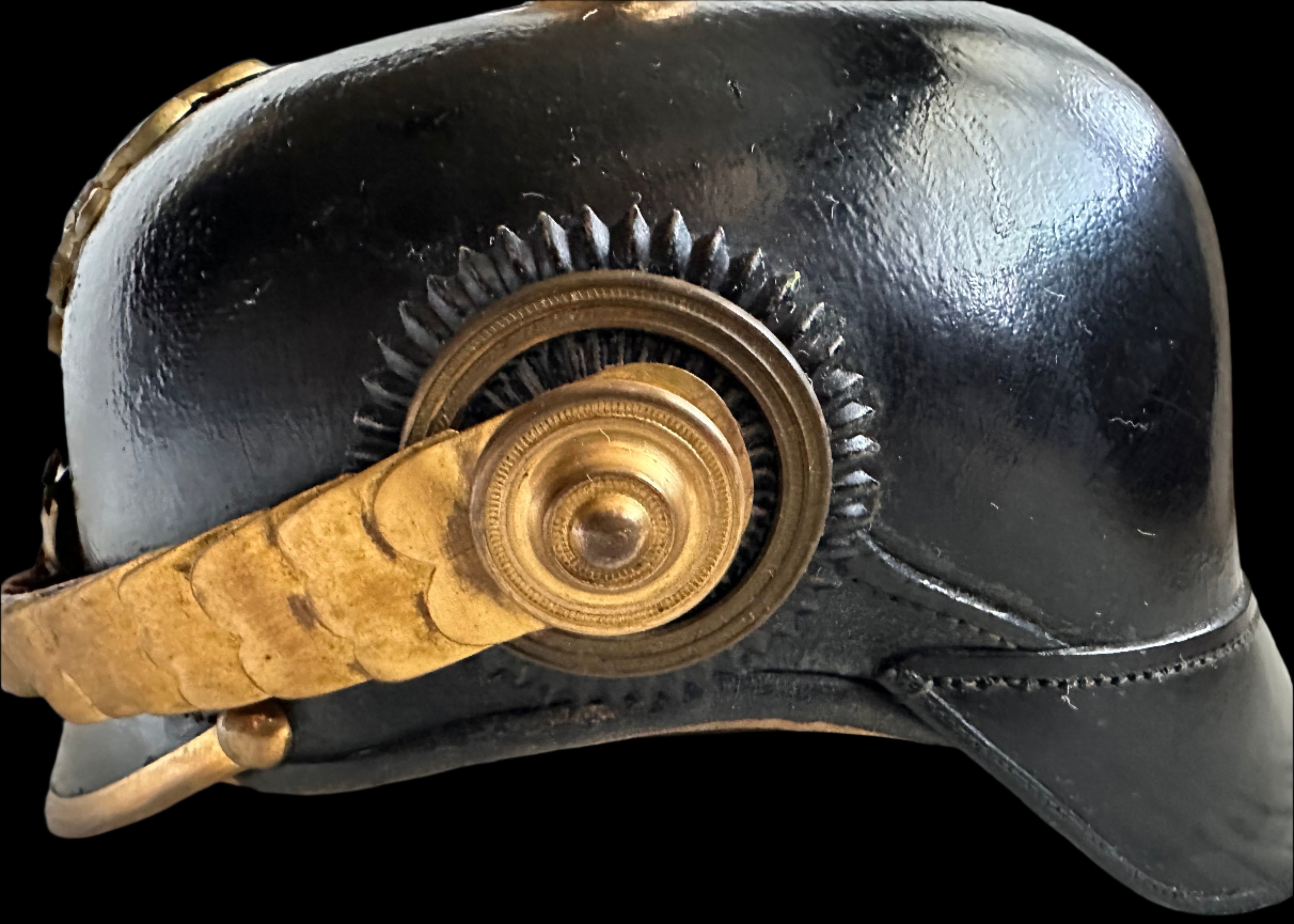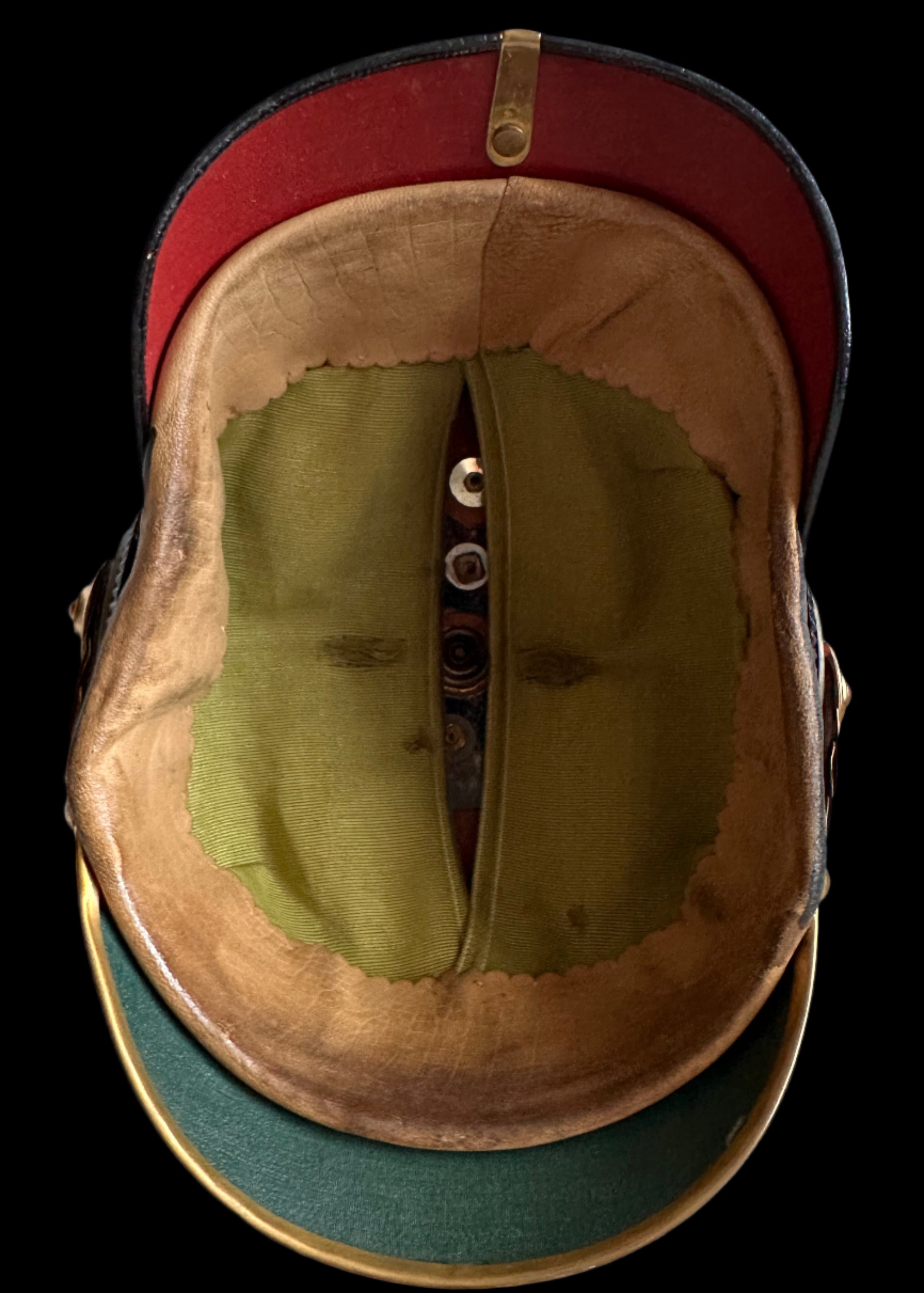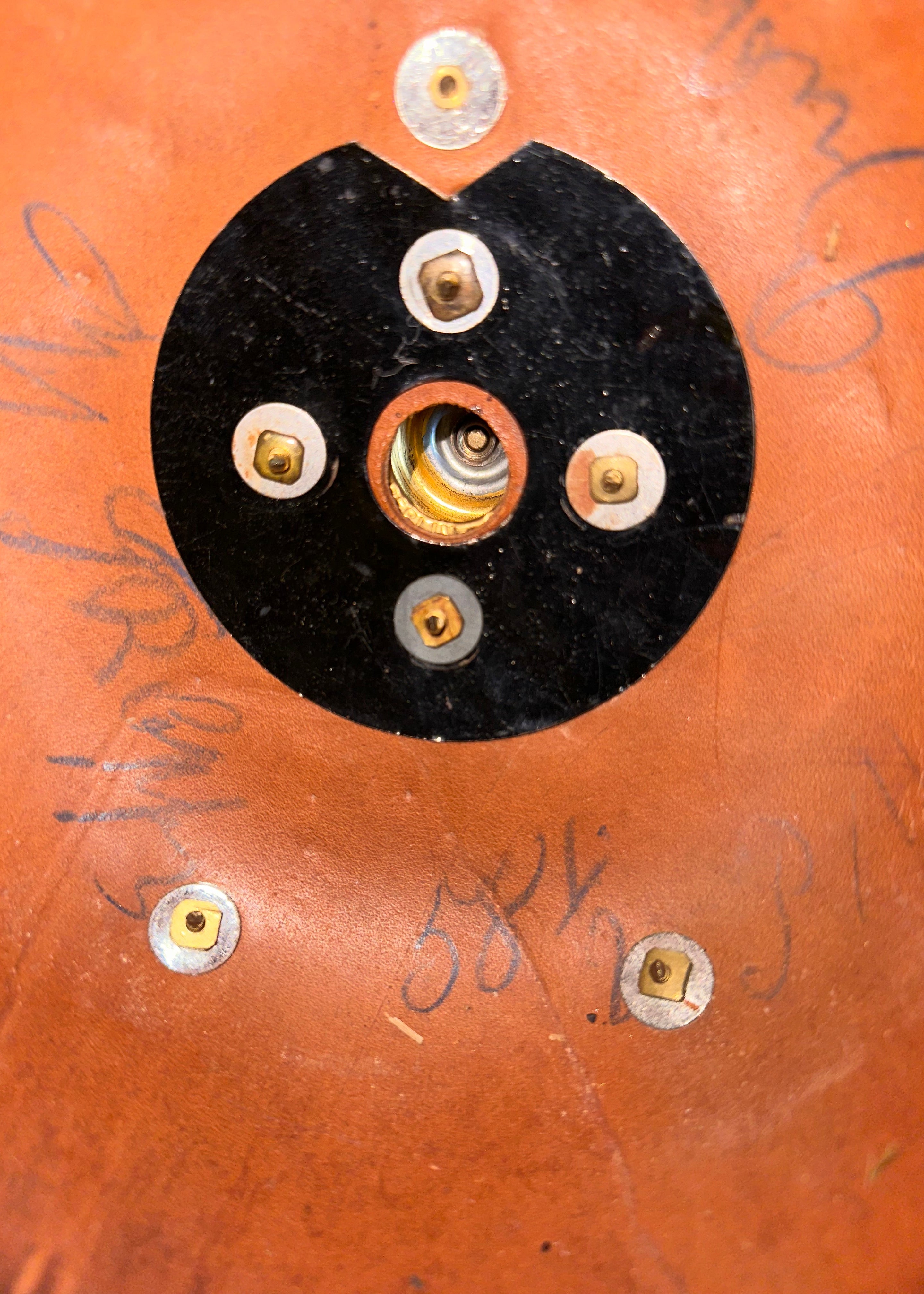Prussian officer Kugelhelm – ball top – gilt eagle – artillery
- Regular price
- $3,795.00
- Sale price
- $3,795.00
- Regular price
SKU: 33-21 XWG
This finely preserved Prussian Kugelhelm topped with the distinctive ball used by artillery and administrative officers during the later years of the empire. The condition of this helmet is outstanding, with its full silk liner, untouched hardware, and richly gilded eagle front plate placing it among the top-tier surviving examples of this refined and lesser-seen officer model.
Prussian artillery officer’s Kugelhelm with gilt eagle and pristine liner
- Helmet Type: Kugelhelm
- Branch: Prussian Army – artillery
- Rank: Officer
- Period: ca. 1897–1914
- Key Features: Gilt Prussian eagle Wappen, ball-top (Kugel) mounted to elegant pearl ring, gilt trim, full green silk liner, black lacquered leather shell
1. Wappen (Front plate):
- Design: Officer-grade gilt Prussian line eagle, featuring:
- Crowned head
- “FR” cipher for Friedrich Rex
- Scepter and orb in talons
- Motto scroll: “Mit Gott für König und Vaterland”
- Mounting: Original screw posts with circular washers; no extra holes observed under interior inspection
- Finish: Bright gilt, clean details across the eagle’s wings, crown, and ribbon
- Historical Accuracy: Matches the M1897 officer’s helmet configuration; identical examples catalogued in Larcade Vol. I, pp. 46–48 and the Berlin Zeughaus archives
2. Kugel (Ball Top) Finial and Mount:
- Finial: Rounded, undented Kugel (ball-top) finial, gilt brass, smooth and unvented
- Mount: Cruciform gilt officer base with four gilt star retainers
- Use Context: Kugelhelm were regulation wear for:
- Foot artillery officers
- Foot artillery officers
3. Cockades and Chinscales:
- Cockades:
- Right: Imperial Reich (red/white/black)
- Left: Prussian State (black and white), gilt-mounted
- Chinscales: Officer-style convex scales, leather-backed, mounted with officer rosettes
- Mounting: Side posts are undisturbed; all screws appear original
4. Helmet Shell and Trim:
- Shell: Deep black lacquered leather body; domed crown, tight seams
- Trim: Gilt brass throughout, including visor edging and rear spine with sliding vent
- Condition: Excellent preservation; minor natural crazing to the lacquer, no warping or shrinkage
5. Interior:
- Liner: Green silk headliner, complete, ribbed, two minor tears
- Sweatband: Tan leather, soft and full; no tears, does show signs of perspiration
- Hardware: All interior mounting nuts are original; cruciform disc unbroken
- Markings: Handwritten size “58½” and faint ink owner initials inside crown
The Kugelhelm was adopted by specific non-combatant branches of the Prussian Army, beginning in the 1840s. By the late 19th century, its use expanded, and some infantry officers wore the Kugel for formal, administrative, or ceremonial duties, especially in garrison commands.
This helmet reflects a privately purchased officer model, likely ordered by a staff officer or regimental adjutant. Its elegant, restrained appearance — with the rounded finial and full gilt trim — projects authority without the aggressiveness of the pointed spike.
The presence of the line infantry eagle, rather than artillery or Train insignia, adds to the helmet’s rarity.
- Exterior: Black lacquer strong and intact; no structural loss
- Trim: Gilt finish retains luster; Kugel top pristine
- Liner: One of the finest examples among the collection — clean, undamaged green silk
- Hardware: No modifications, extra holes, or modern replacements
- Cockades: Original; enamel not retouched
- Kugelhelm with infantry insignia are significantly rarer than artillery versions
- This example features complete interior, untouched mounts, and pristine silk — uncommon
From a private collection, this helmet is among the cleanest preserved officer Kugelhelm in private hands. Acquired via a Stuttgart militaria contacts in the early 2000s; it has remained unaltered and display-ready ever since.
